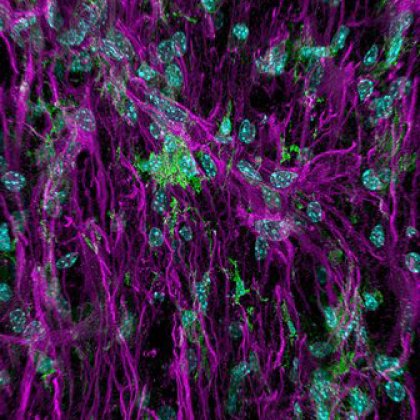
Rapid treatment with a new anti-inflammatory could have a major impact on recovery from spinal cord injury, University of Queensland researchers have found.
UQ School of Biomedical Sciences’ Dr Marc Ruitenberg and PhD student Ms Faith Brennan said they made the discovery during laboratory trials with an experimental drug.
Ms Brennan said that excessive inflammation caused additional damage in spinal cord injuries and hindered recovery.
“We found that a molecule called C5aR exacerbates inflammation and tissue damage after spinal cord injury,” she said.
“Our study shows that drugs inhibiting C5aR can improve recovery when administered early after injury.
“This exciting discovery could form the basis for new frontline therapies to treat patients with spinal cord trauma.”
Dr Ruitenberg said there was a critical time window for this new treatment.
“What we also discovered is that this molecule, C5aR, has multiple roles and is also needed for repair processes undertaken by astrocytes, a specialised type of cell in the spinal cord,” he said.
“Astrocytes normally multiply in response to injury, which is an essential process to form a barrier between damaged and healthy tissue.
“Any long-term interference with this process could therefore make things worse.
“Our challenge was to find out how long treatment with the new drug could be continued before its beneficial effects were lost, and also to understand why this occurred so that adverse side-effects could be prevented.”
SpinalCure Australia CEO Mr Duncan Wallace, whose organisation supports the UQ research, said the study was a great step towards developing an effective treatment for spinal cord injury.
“It takes us closer to the day when a spinal cord injury is no longer a life sentence,” he said.
The research is published on the cover of The Journal of Neuroscience (The Complement Receptor C5aR Controls Acute Inflammation and Astrogliosis following Spinal Cord Injury).
Media: Lynda Flower, SBMS Marketing, +61 7 3365 1536 l.flower@uq.edu.au.
About spinal cord injury:
- Every day a motor vehicle accident, sporting injury or simple fall results in another Australian being paralysed by a spinal cord injury.
- The impact of a spinal cord injury on someone’s life—and that of their family and friends—is overwhelming.
- A damaged spinal cord not only means losing control of your muscles, but also deprives you of the sensations of pain, pleasure, touch and pressure, the control of bladder and bowel, and sometimes the ability to breathe unaided.
- Spinal cord injury can happen to anyone at any time, however, they most commonly occur in young men between 16 and 24 years of age.
- Around 15,000 Australians live with a spinal cord injury.
- The total cost burden for spinal cord injury in Australia is estimated to be $4bn per annum (Source: Access Economics, “The Economic Cost of Spinal Cord Injury and Traumatic Brain Injury in Australia”, June 2009).
For more information on spinal cord injury: http://www.spinalcure.org.au
.jpg)










